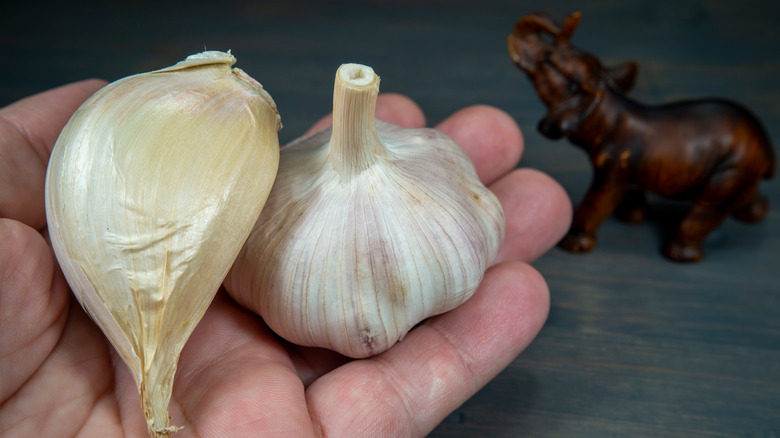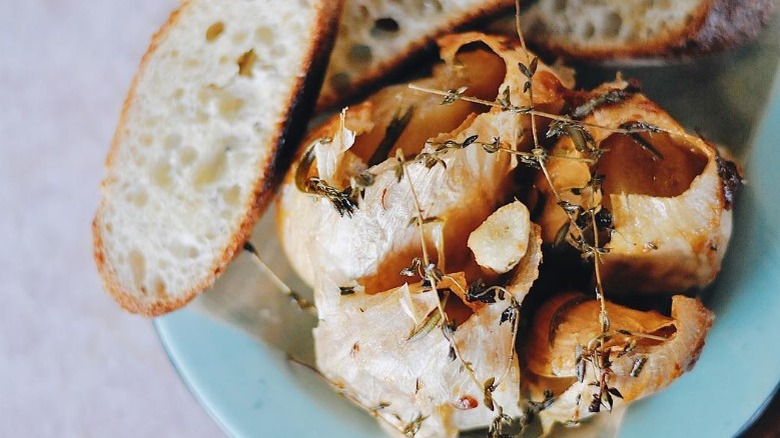The Surprising Truth About Elephant Garlic
Are you ready for the shocking truth about elephant garlic? We hope you're sitting down because here it is: It's not even garlic. This bulbous imposter is, in fact, a member of the leek family that's often mistakenly thought of as a member of garlic's species. Botanical classification scandals aside, we're not telling you to shun elephant garlic or hold this fact against it. (After all, it didn't name itself.) Both have their culinary uses.
Cook's Illustrated explains things further: Both elephant garlic and actual garlic are aromatics, described by the Academy of Nutrition and Dietetics as vegetables with a "deep, rounded flavor and aroma when heated or crushed." These include onions, ginger, and, of course, garlic. The conventional garlic we typically buy in grocery stores and elephant garlic are both members of the allium genus. The two diverge, however, at the species level. While regular or "softneck" garlic belongs to the species sativum, elephant garlic belongs to the ampeloprasum species (with the leeks, as we said).
While conventional softneck garlic and elephant garlic can look similar from the outside, there are nonetheless some obvious differences between the two, according to Cook's Illustrated. A head of conventional garlic can contain up to 20 small cloves. A head of elephant garlic, however, will contain no more than six cloves that are much larger than cloves of true garlic. Their colors also differ. Cloves of elephant garlic are yellowish, compared to the whiter softneck garlic.
How can you use elephant garlic?
Perhaps most importantly, standard garlic and elephant garlic taste different. Once you understand this difference, you'll know why regular garlic is one of those basic ingredients you should always have on hand, while elephant garlic doesn't have so many everyday uses. Raw elephant garlic has a mild and somewhat onion-like flavor. Cooked in other dishes, such as soup, the flavor all but disappears. Cook's Illustrated says that if you want mild garlic flavor in a dish, don't substitute elephant garlic for regular garlic. Just use a smaller amount of conventional garlic.
So how and when do you use elephant garlic? Because of its milder flavor, you can think of it as more of a vegetable than an herb. According to Specialty Produce, raw slices add an extra layer of flavor to salads. You can also bake, grill, or roast elephant garlic with other vegetables. Deep-frying slices of elephant garlic makes delicious garlic "chips." Finally, try roasting a whole head of elephant garlic and use it as an alternative to butter on fresh bread or rolls.
So while elephant garlic isn't really garlic at all, it certainly has some delicious uses.

